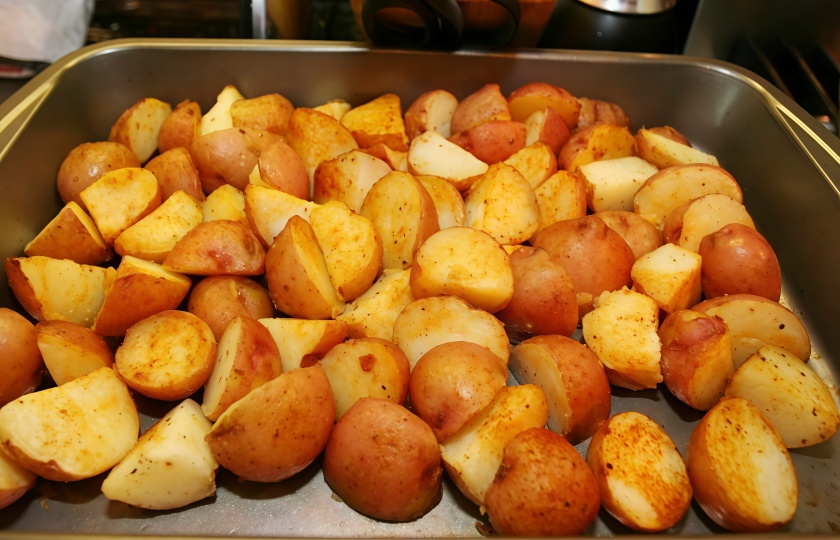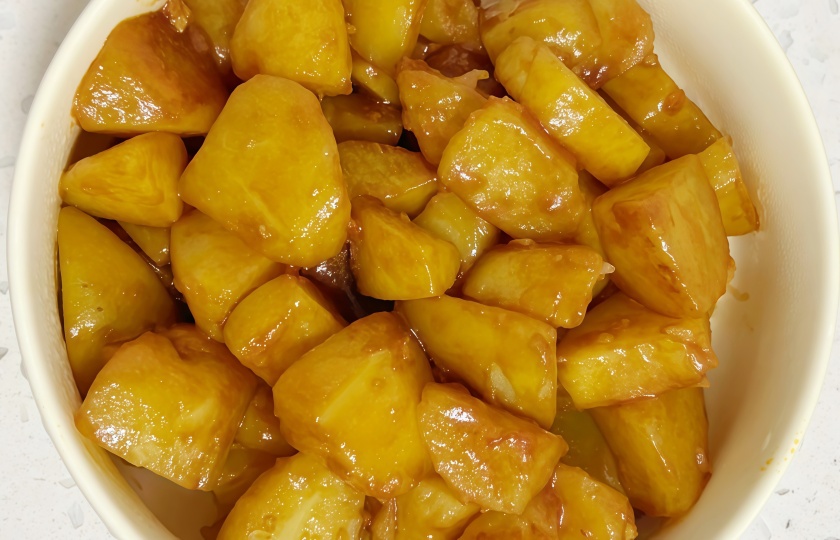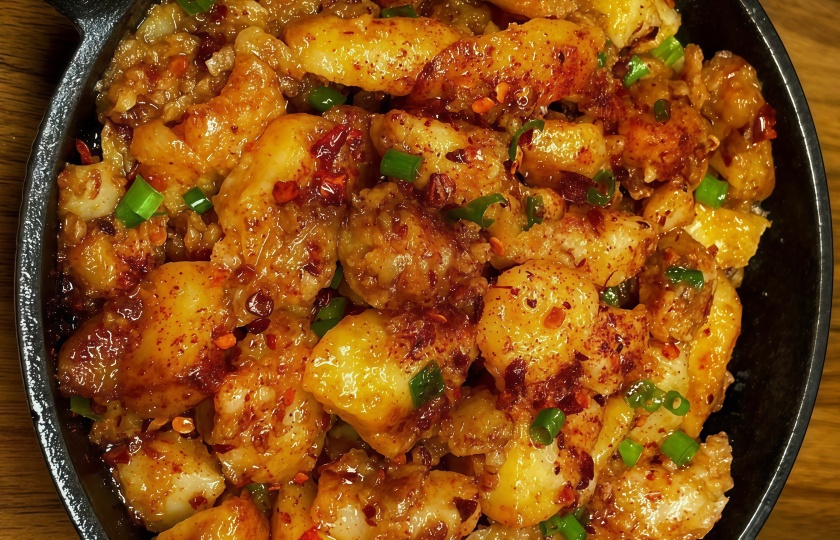Can You Cook Whole Potatoes in a Slow Cooker: The Ultimate Guide

In a slow cooker, cooking whole potatoes is a simple and convenient method that can make potatoes cook to be soft and juicy. Whether you want to make mashed potatoes, salads or other potato dishes, a slow cooker is a great choice. We will explore how to cook whole potatoes in a slow cooker and provide some useful tips and precautions.
How to Cook Whole Potatoes in the Slow Cooker?
First, you need to select potatoes with intact skin and firm texture. After washing, you can choose to peel or keep the skin. Then put the processed potatoes into the slow cooker and add appropriate amount of water. The amount of water should cover the potatoes by 2 to 3 cm to ensure that the potatoes can be fully heated.
You can add a little salt, pepper and other seasonings according to your personal taste to enhance the flavor. Then, turn the slow cooker to low temperature. Generally, medium-sized potatoes need to be stewed for 3 to 4 hours, and larger ones can be extended by 1 to 2 hours.
During the stewing period, occasionally check the remaining water in the pot. If the water is insufficient, add appropriate amount of hot water in time to prevent the potatoes from burning.
Finally, try to insert the potato with chopsticks. If you can easily insert it, it means it is cooked. At this time, use tools to remove the potato, let it cool slightly, and then you can enjoy it.
Will potatoes overcook in a slow cooker?
Potatoes can be overcooked in a slow cooker.
On the one hand, if the simmering time is set too long. For example, for medium-sized potatoes, it is fine to simmer on low heat for 3 to 4 hours normally. But if you forget the time and let it cook for five or six hours or even longer, then the potatoes are likely to become overly soft and mushy and may even fall apart, losing their original complete shape and firm texture.
On the other hand, although the evaporation of water in a slow cooker is relatively slow, if not enough water is added at the beginning and it is not checked and replenished in time during the simmering process. After the water dries up and the potatoes continue to be heated in the pot, they are also very likely to be overcooked, resulting in situations such as scorched surface and dry and hard interior.
So when cooking potatoes in a slow cooker, pay attention to the time and check the remaining amount of water in the pot and the state of the potatoes from time to time. In this way, you can try to avoid overcooking as much as possible.

How long before cut potatoes turn brown without water?
Usually, when we cut potatoes and dont water them, under normal temperature environment, they will start to turn brown slowly in about 10 to 15 minutes.
Because potatoes contain polyphenol oxidase. When potatoes are cut, their internal cell structure is destroyed. Polyphenol oxidase will react with oxygen in the air and oxidize phenolic substances in potatoes to quinones. After a series of changes and polymerization, the surface of potatoes presents brown, which is commonly known as the "browning" phenomenon.
However, this discoloration time is not absolutely fixed and will be affected by some factors. For example, the ambient temperature. If in a high-temperature environment, the reaction speed will accelerate and potatoes may start to change color in less than 10 minutes. If in a low-temperature environment, like in a refrigerator refrigeration environment, the browning process will be delayed and it may take half an hour or even longer for obvious discoloration to occur. In addition, different potato varieties have different amounts of related enzymes and phenolic substances, which will also have a certain impact on the speed of discoloration.
Do potatoes have to be covered with liquid in a slow cooker?
If you want the potatoes to be heated evenly and achieve the ideal taste, it is a better practice to cover the potatoes with liquid. Liquid can play a very good role in heat transfer. It can evenly transfer the heat generated by the slow cooker to all parts of the potatoes, so that the potatoes are slowly cooked thoroughly as a whole, avoiding situations where some parts are not cooked or overcooked. For example, if we immerse potatoes in liquids such as clean water and broth, the potatoes can be cooked gradually during the simmering process. Moreover, the cooked potatoes will be more soft and delicious, and can also absorb the flavors in the liquid and add a different flavor.
However, it is also possible not to completely cover the potatoes with liquid. But in this case, when simmering, you have to pay more attention to the state of the potatoes and the cooking time. Because the parts not wrapped by liquid will be heated differently and may be more likely to become dry or scorched. You have to check frequently and adjust the time appropriately. And in the end, the taste of the cooked potatoes may not be as uniform and soft as when covered by liquid.
So, although potatoes in a slow cooker dont necessarily have to be covered with liquid, for more guaranteed cooking results, it is still recommended to cover the potatoes with liquid as much as possible for simmering.

Why are my roast potatoes so hard?
Selection of potato varieties
Different potato varieties have different characteristics. Some potatoes themselves are relatively hard in texture and have relatively low starch content. New potatoes with relatively smooth skins and longer shapes are not very suitable for baking. The baked ones often have a relatively hard taste. While potatoes like yellow-hearted potatoes and old potatoes have high starch content and are easier to become soft and glutinous when baked. So choosing the right potato variety is very crucial.
Baking time and temperature
Insufficient time: If the starch inside the potato cannot be fully heated and gelatinized, it will still be in a hard state. Generally speaking, for potatoes of moderate size, baked at a temperature of about 200°C, it takes about 40-60 minutes. If the temperature is set too low, the heat transfer is slow and it cannot be baked thoroughly in the same amount of time. If the temperature is too high, the surface of the potato is easily scorched, but the inside is still not cooked and is still hard.
Potato treatment method
If you don't poke some small holes or cut the potato before baking, then during the baking process, the hot air inside the potato is difficult to dissipate. This is also not conducive to its uniform heating and easily leads to the outside being already dried out while the inside is not yet cooked thoroughly, thus making the whole potato taste hard.
Influence of storage state
If the potato is placed for a long time and loses a lot of moisture and becomes dry and hard by itself, then it will still be hard when baked. So try to choose fresh potatoes for baking, so as to better ensure the baked taste.
You can check which link you didn't do well according to these reasons and make corresponding adjustments next time when baking. I believe you will be able to bake soft and delicious potatoes.
What are some of the mistakes people make using a slow cooker?
Ingredient preparation
Improper cutting and preparation: The ingredients are cut into different sizes, which is easy to cause some to be overcooked and some to be undercooked. And if they are not processed cleanly and there are impurities, it will also affect the quality. Overfilling will hinder heat transfer and make it difficult for the internal ingredients to be fully heated.
Time and temperature
Time estimation: Not knowing the simmering time of ingredients. If the time is short, the ingredients are not cooked. If the time is long, they are overcooked and lose their original flavor and shape.
Temperature setting: Choosing the wrong setting. For example, if high temperature is selected when low temperature should be used, the surface will be cooked too quickly, while the inside is not cooked or the ingredients will be dehydrated and become dry, affecting the taste.
Adding water and seasoning
Amount of water added: Too little water is easy to dry up and stick to the pot and burn. Too much water will dilute the taste and make the soup bland.
Timing of seasoning: Adding salt too early, etc. For ingredients such as meat and beans, it will cause the protein to coagulate prematurely, making it difficult to cook thoroughly and absorb flavors poorly.
Safety and maintenance
Before use: Not checking the power cord, plug, etc., there are potential safety hazards.
After use: Not cleaning in time. Residual residues are easy to breed bacteria and produce odors, and may also affect the heating effect and service life. When using a slow cooker, pay attention to these aspects to avoid making mistakes and ensure the cooking effect.























